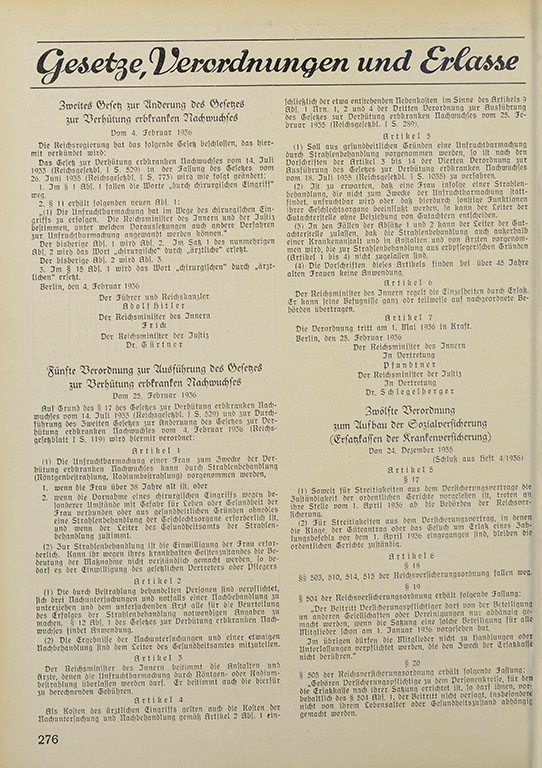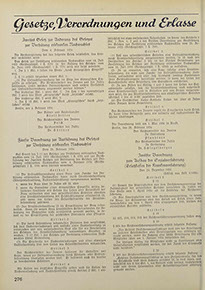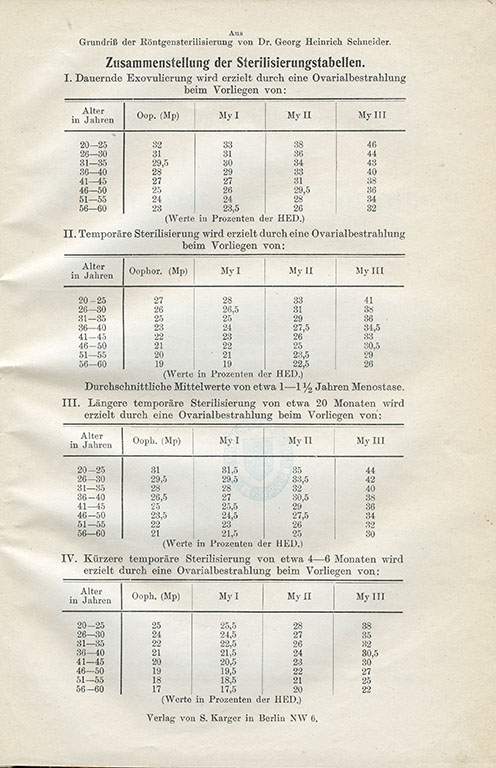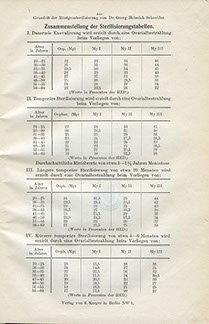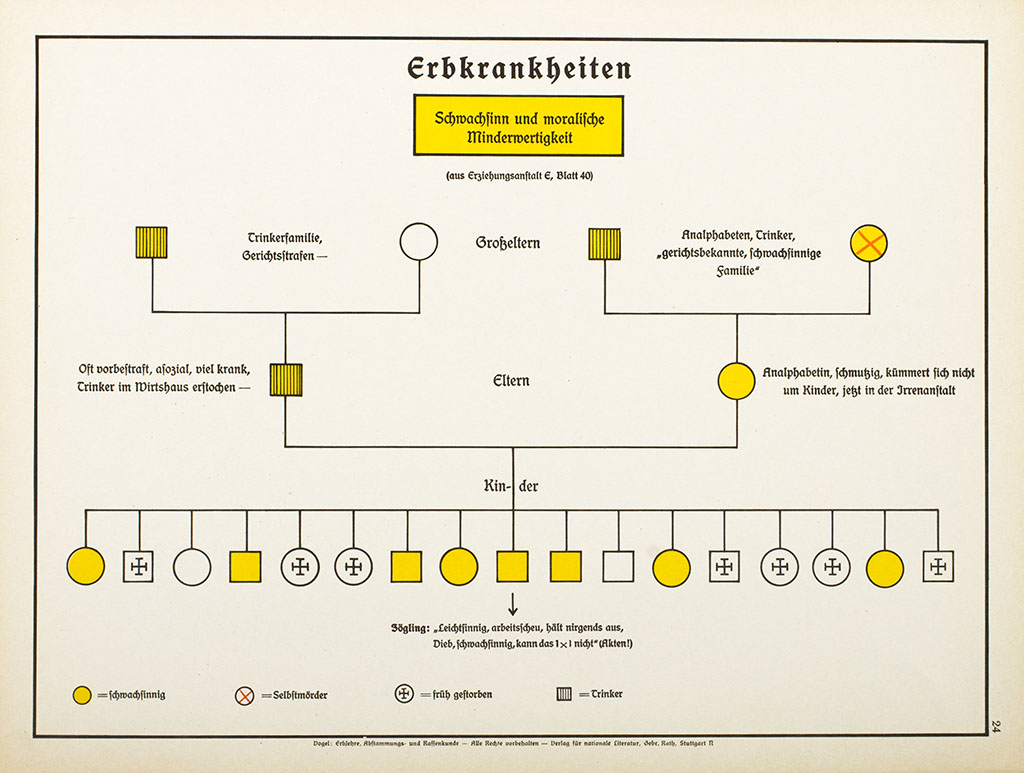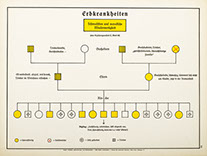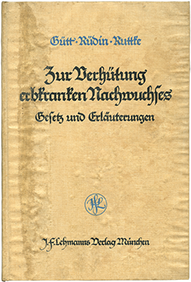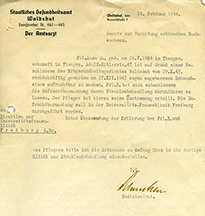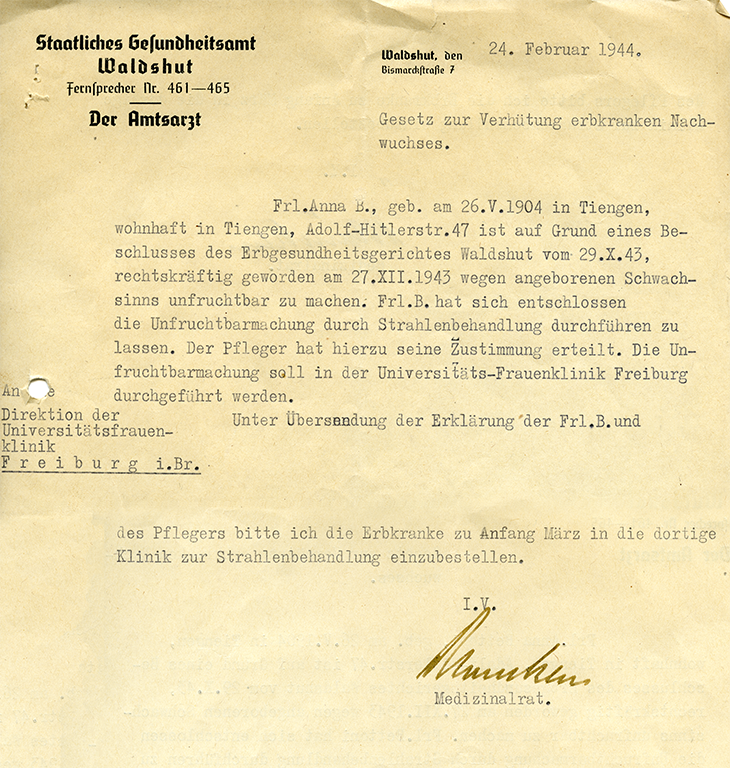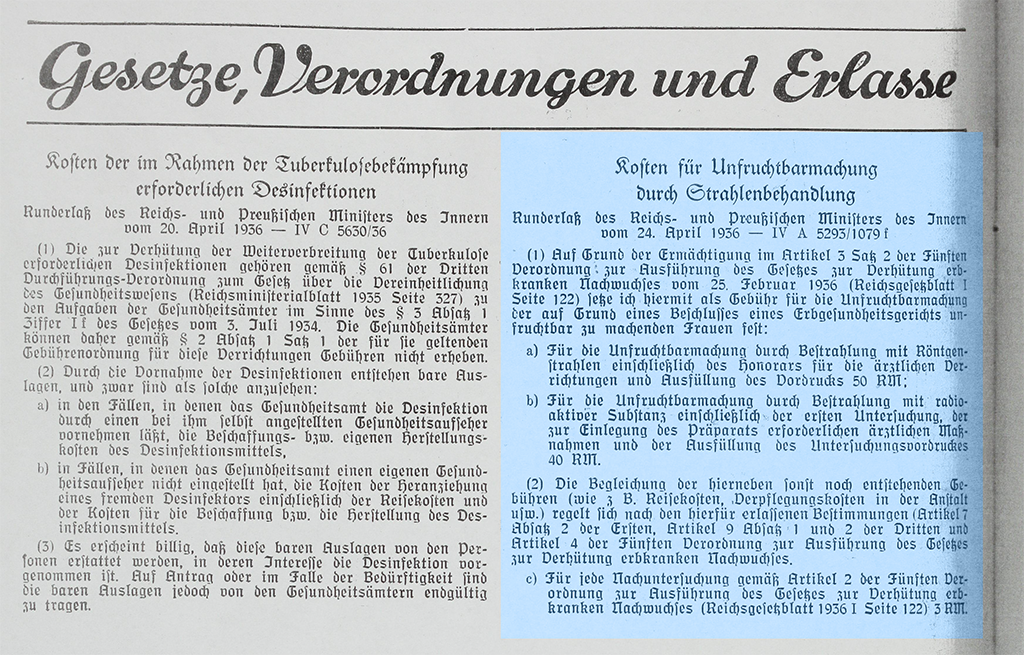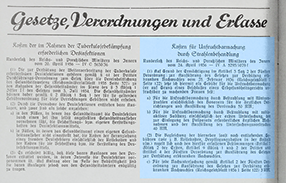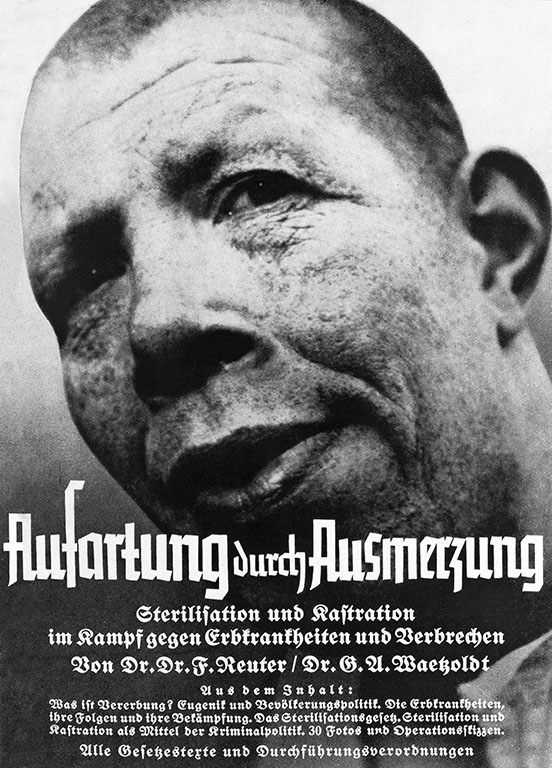
Negative Eugenics
Negative eugenics measures ranged from the isolation of those believed to have hereditary illnesses to prohibitions against marriage, and the use of medical interventions to eliminate the reproductive capacity. Sterilisation in particular was discussed as a means of qualitative population policy in Germany before 1933, and it was practised in other countries including the United States and a few European countries such as Denmark, Sweden, and Switzerland.
What made the sterilisation policy implemented by the National Socialist state unique was, on one hand, the use of police force to compel people to undergo medical sterilisation; on the other hand, the dimensions of the program were also unmatched: between 300,000 and 400,000 people were sterilised. A diagnosis of “feeble-mindedness” was the most frequent indicator for sterilisation.
The relatively high post-operative overall morbidity for women – a study of 1,000 eugenic sterilisations found that a 9.5% mortality rate was not extraordinary – necessitated the search for another method of sterilisation. The fifth ordinance in the “Law for the Prevention of Offspring with Hereditary Diseases” (GzVeN) allowed radiological sterilisation for non-medical indicators as of 1 May 1936. In contrast to the previous practice of radioactive intervention, the sterilisation of those thought to have hereditary illnesses under the GzVeN was conducted without the intention of providing individual therapeutic treatment afterwards. This is clear, not just from the numerous medical research projects that were done at the same time, but also from the interim report delivered at the 30th “German Radiological Congress,” held in 1939 in Stuttgart. Carl Joseph Gauss and Arthur Pickhan delivered lectures about their experiences with 936 women by that date. Both described radiological sterilisation and radium insertion as “beneficial supplements” to operational methods. The fact that this was not sterilisation, but rather “castration by radiology,” with all of its undesirable health consequences, was duly noted in the announcement of the talks.
Overall, there were 150 physicians – not a single female doctor among them – authorised to conduct sterilisation by radiological means in the German Reich. A comparison with the membership directory of the German Radiological Society in 1940 found that about half of these authorised physicians, 77 of them, were members of this professional association. These men were all professional medical practitioners with outstanding training.
Pfundtner, Hans/Schlegelberger: Fifth decree on the implementation of the Law for the Prevention of Offspring with Hereditary Diseases. Dated 25 February 1936 (German Physicians’ Journal, 1936, p. 278)
Title: F. Reuter/G. A. Waetzoldt: Cultivation through Elimination. Sterilisation and Castration in the Fight against Hereditary Illnesses and Criminality, Berlin 1936
Composition of sterilisation tables (in: Schneider, Georg Heinrich: Grundriss der Röntgensterilisierung. Beobachtungen an 315 Fällen (= from Geburtshülfe u. Gynäkologie, ed. A. Martin et al., Vol. 5), Berlin 1931, p. 56)
Hereditary illnesses,
album www.berliner-zukunft.de/Vogel,
page 26/82
Title: Gütt, Arthur/Ernst Rüdin/Falk Ruttke (eds.): Law for the Prevention of Offspring with Hereditary Diseases of 14 July 1933, with excerpt from the Law against Dangerous Habitual Criminals and Measures for their Imprisonment and Treatment of 24 November 1933,
Munich 1934
State Health Office Waldshut. Public health physician, 24 February 1944. (X-ray sterilisation of a 40-year-old woman who was said to suffer from hereditary feeble-mindedness).
Cost of Sterilisation through Radiation: Memorandum of the Reich and Prussian Minister of the Interior, dated 24 April 1936 - IV A 5293/1079 f (German Physicians’ Journal 1936, p. 616)
Menu
Deutsche Röntgengesellschaft e.V. © 2018
| Impressum | Datenschutz
